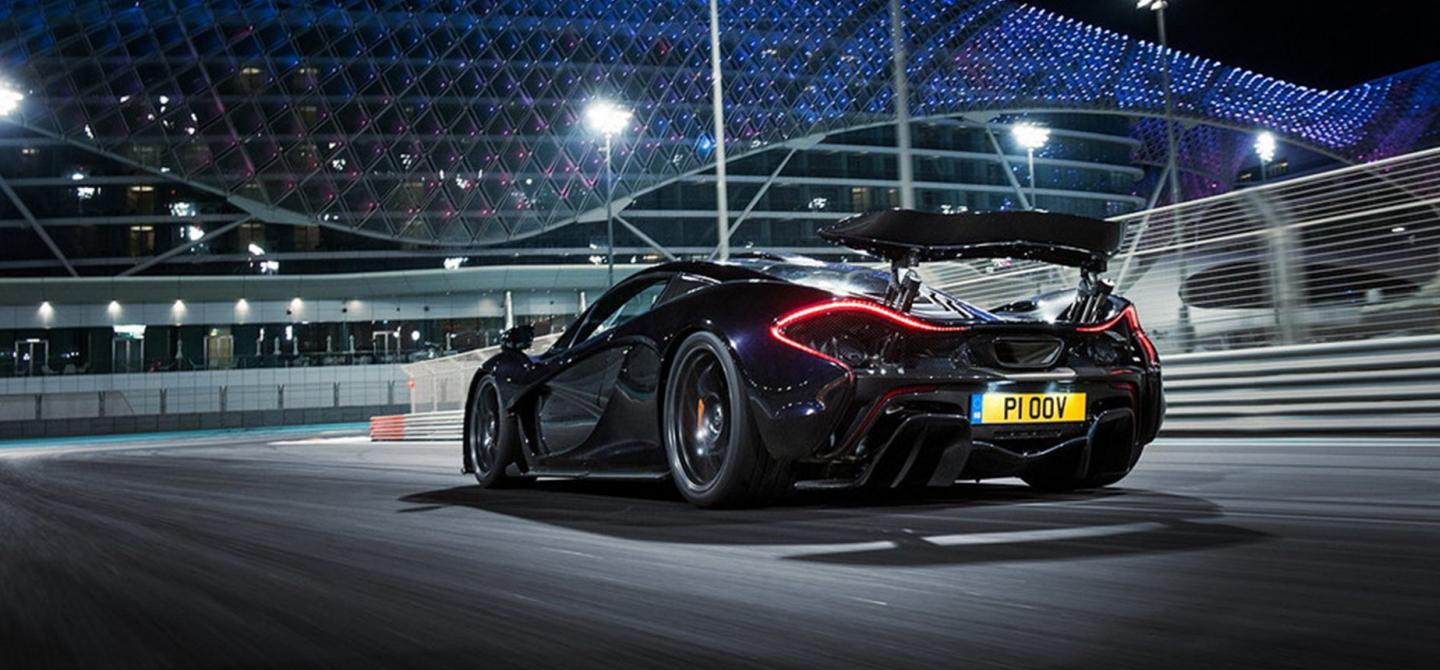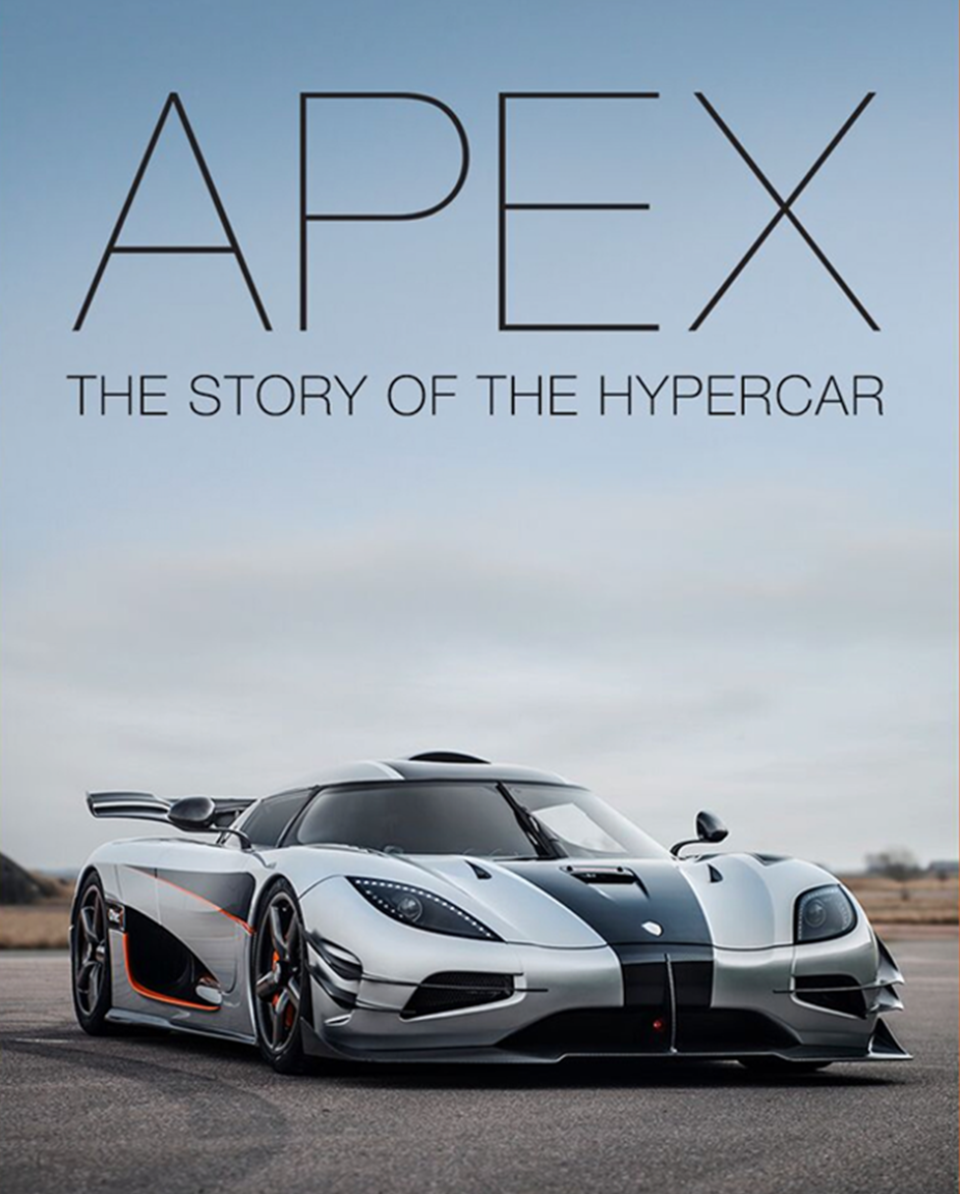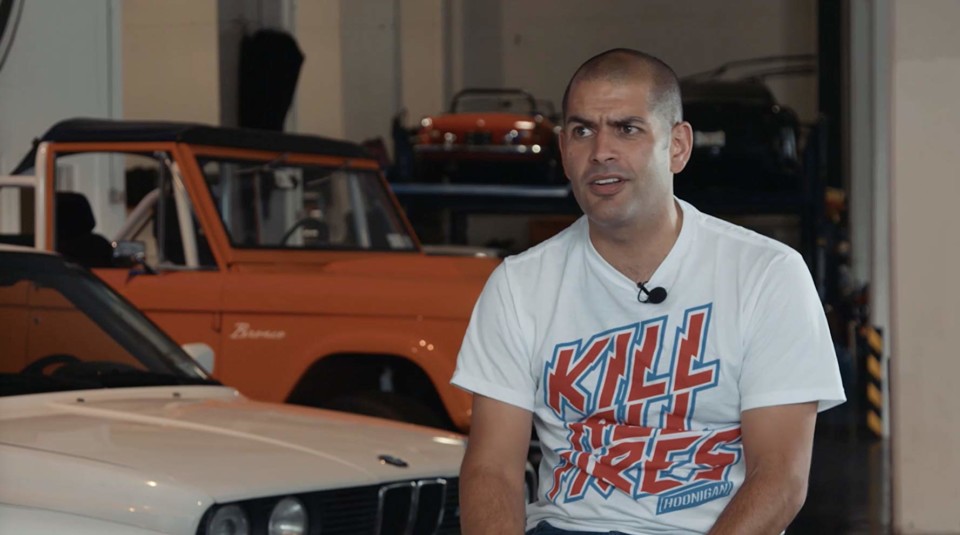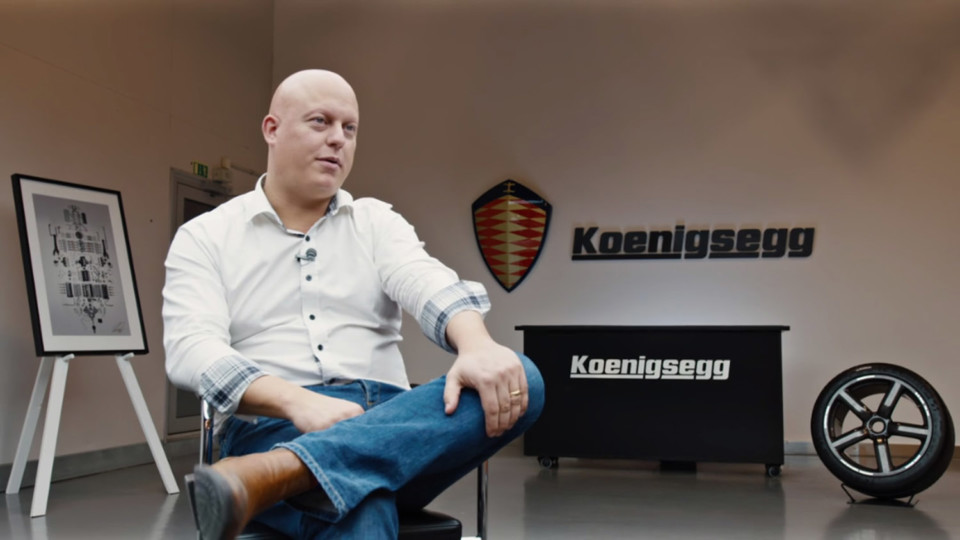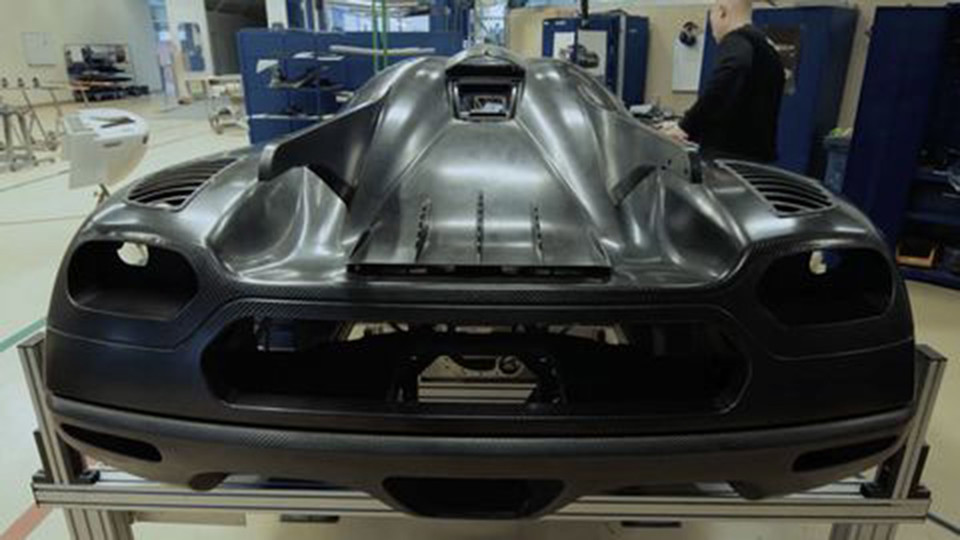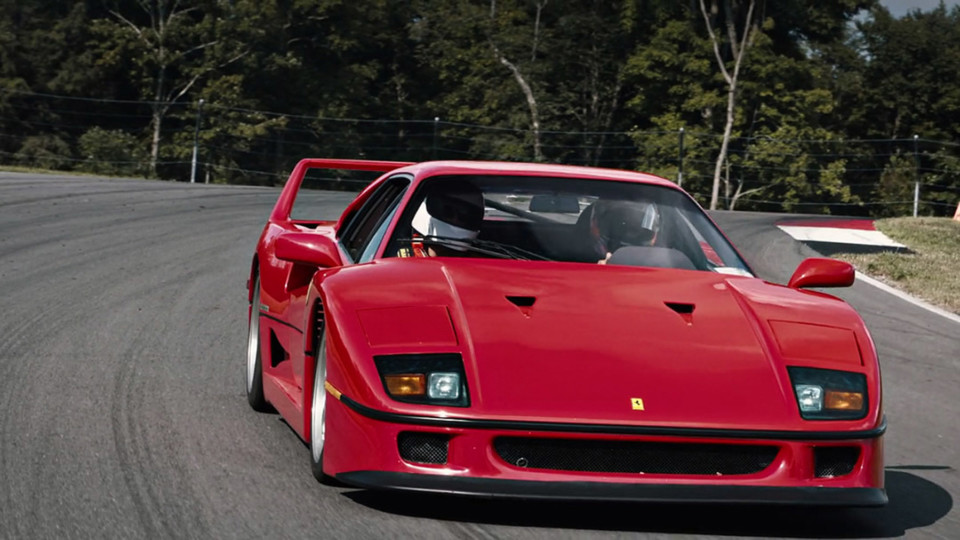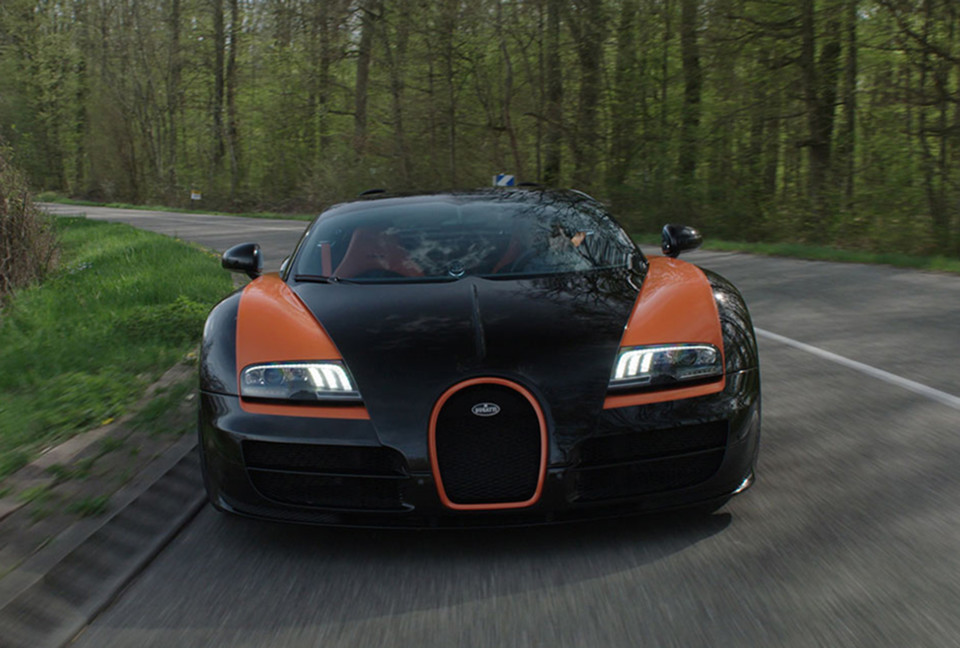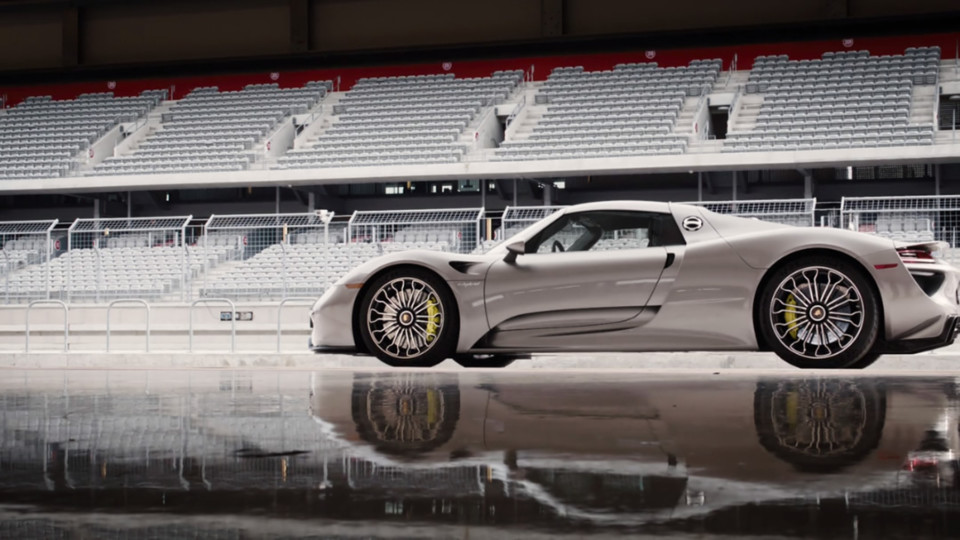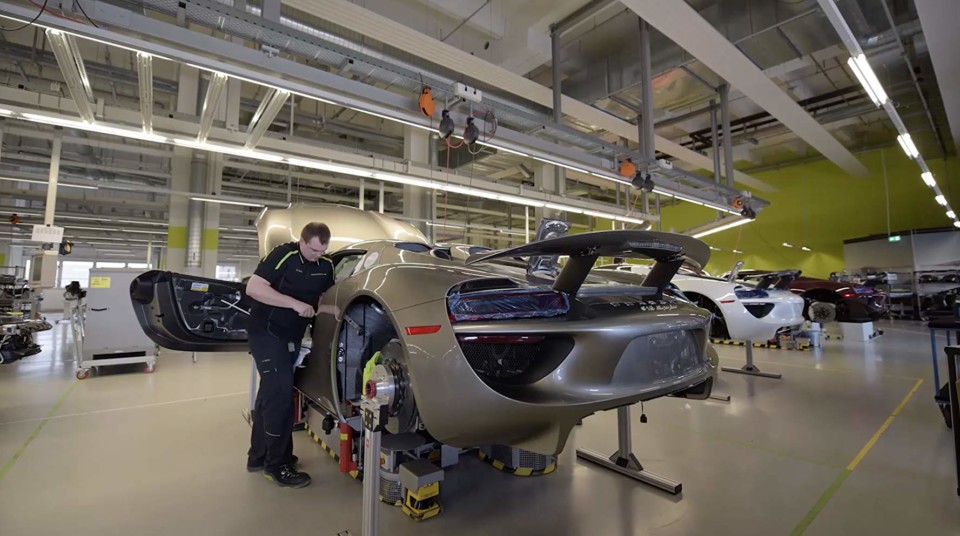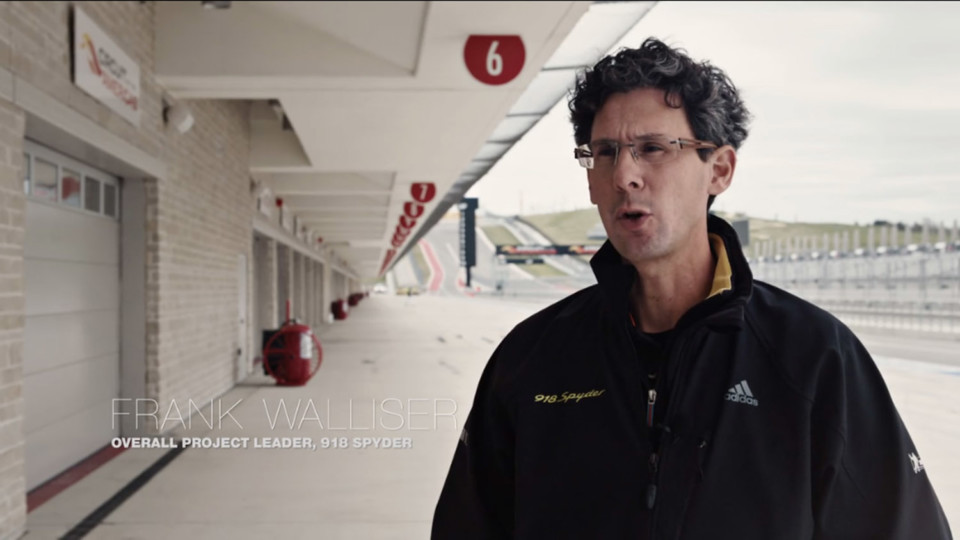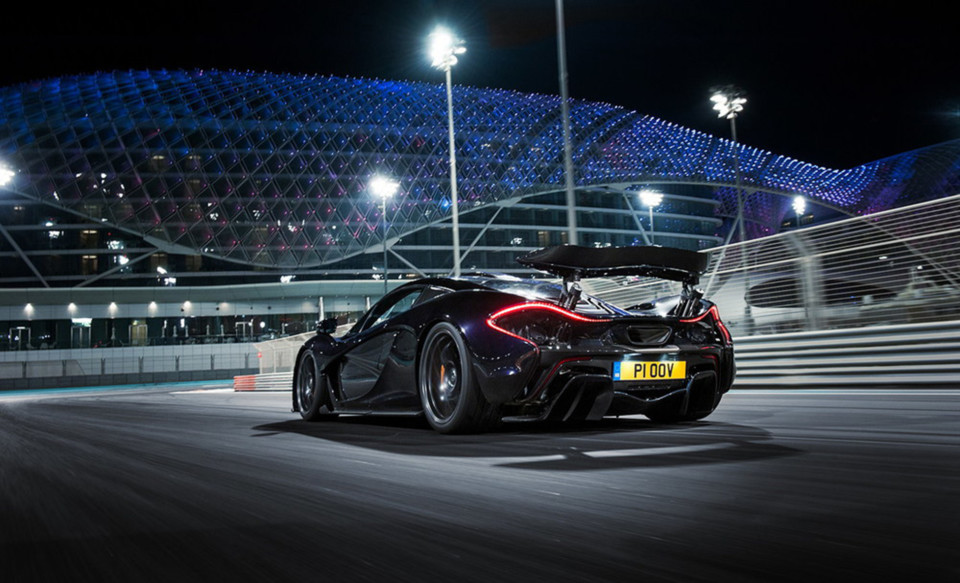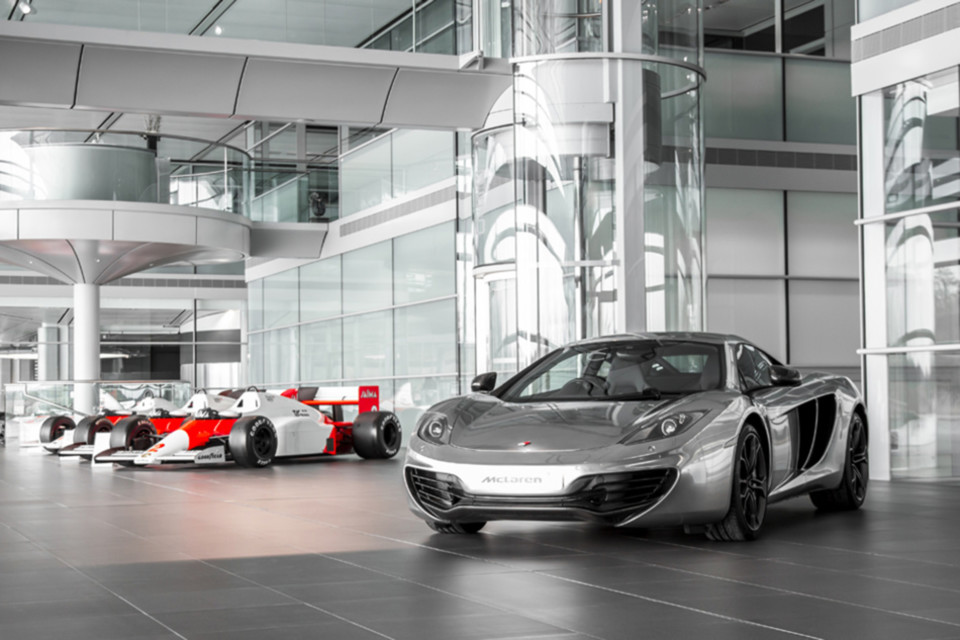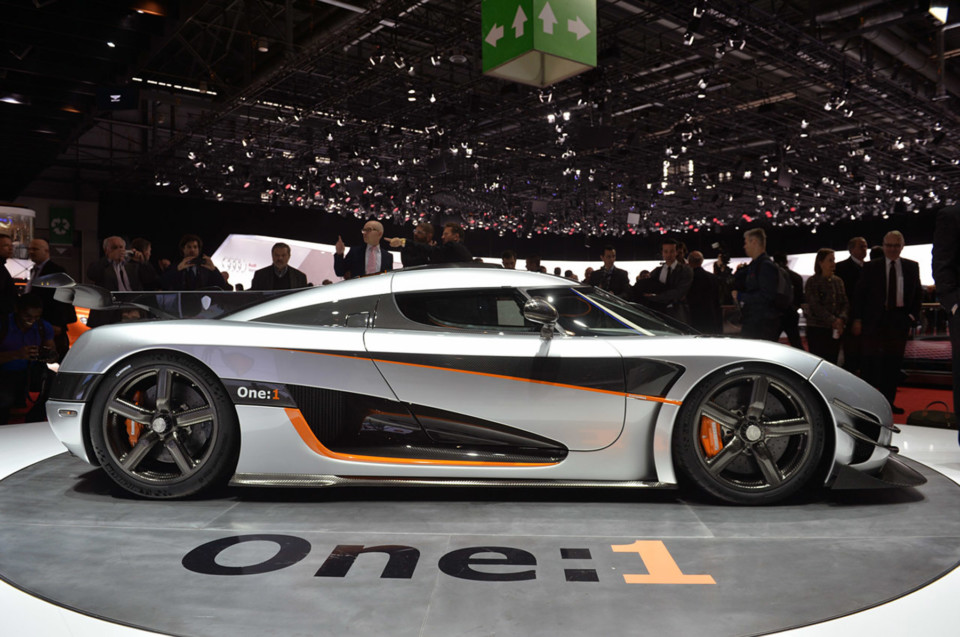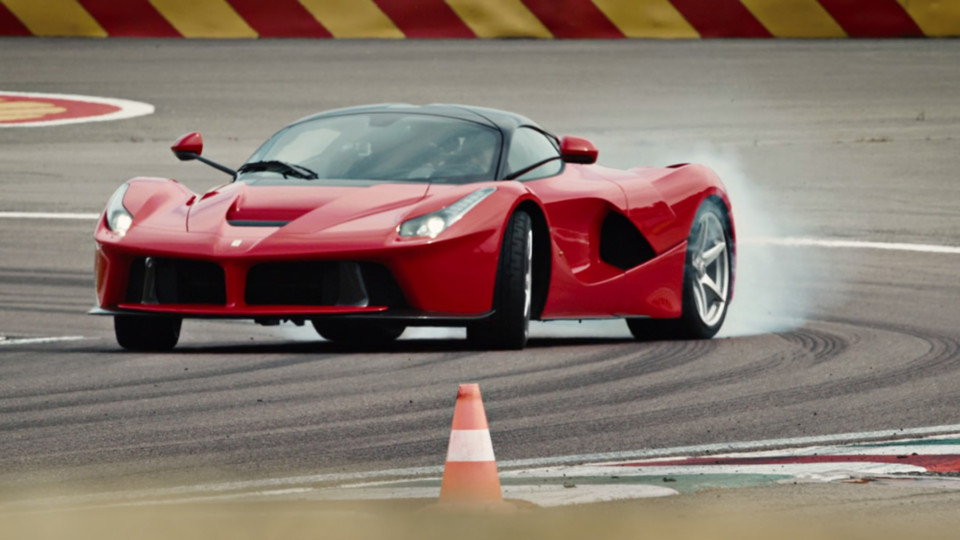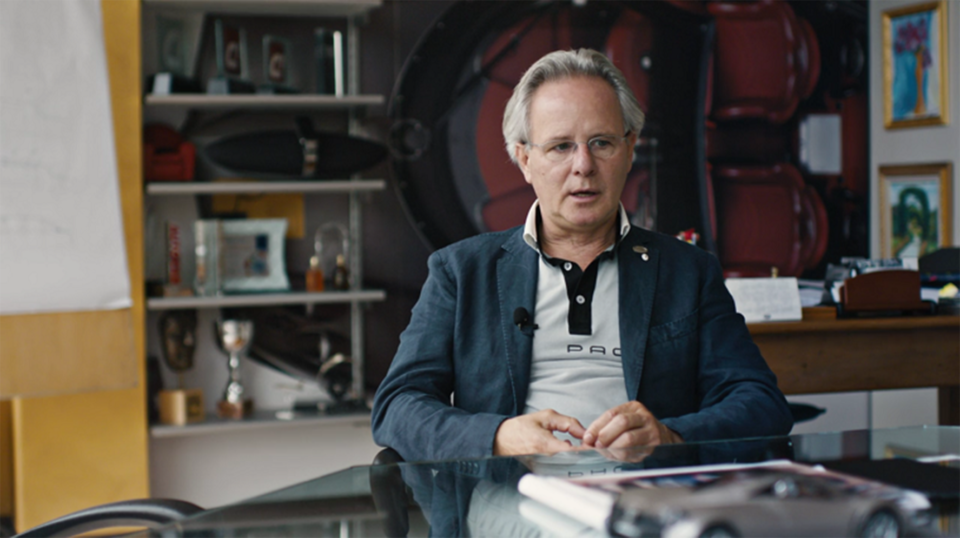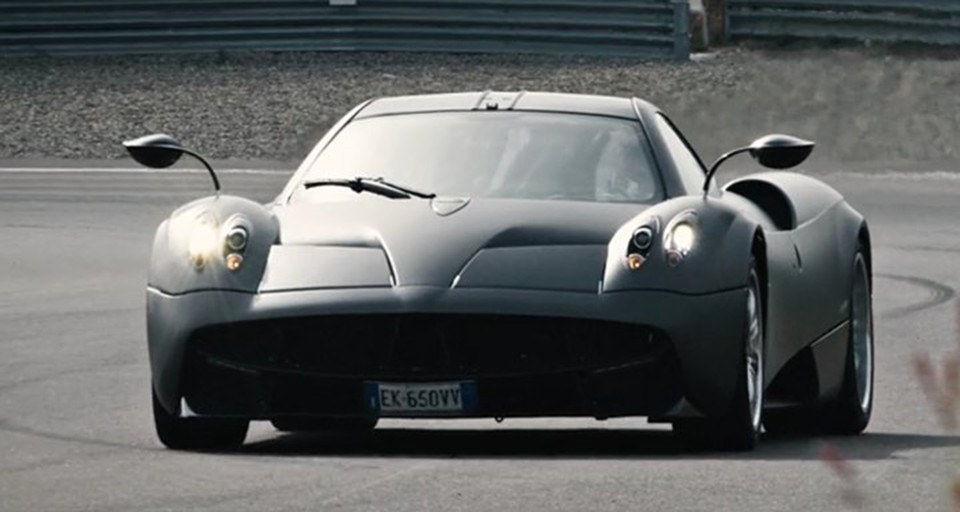If you’ve been reading my recent columns, you will have noted that two of them were reviews of automotive shows available for streaming on Netflix. My appraisals of Fastest Car and Paul Hollywood’s Big Continental Road Trip were both glowing, and the shows convinced me that the company is one of the prime producers of original automotive programming today.
As most of you who subscribe to it know, the content that Netflix’s interactive recommendation system suggests for you changes depending on the type of programming you have previously gravitated towards. Having watched both of the aforementioned shows for my reviews, Netflix began recommending a host of other automotive films for me to watch.
One suggestion that caught my eye was a documentary entitled Apex: The Story of the Hypercar. I read the synopsis and thought I’d give it a spin, and boy I am glad I did. It turned out to be so well done, so informative and artful, so utterly absorbing that I felt compelled to write a thorough examination of what might be the single best look at the high end of the automotive spectrum ever produced. So without further ado, I am pleased to offer you my impressions of Apex: The Story of the Hypercar.
Released in 2016, Apex was produced by Christian Schnedler and Kathy Gaccione, and was unusually helmed by a pair of directors, Josh Vietze and J.F. Musial.
The film attempts to define what a hypercar is by focusing on five different offerings from European manufacturers: Porsche, Ferrari, McLaren, Pagani and Bugatti. These chapters are intercut with an intimate interview with Christian Von Koenigsegg, founder of Koenigsegg Automotive, and a look at the struggle to get his latest creation ready for its debut at the Geneva Auto Show and a subsequent attempt at the Nürburgring lap record.
After an artful opening credit sequence consisting of abstract, static shots of hypercar bodywork and details, Apex commences with automotive journalists and authorities Chris Harris, Mike Spinelli, Dan Neil, Travis Okulski, Dan Greenawalt, and Alex Roy all describing their numerous experiences with hypercars, and their feelings about them.
In addition to laying out the performance and engineering parameters that define the hypercar, the men also attempt to elucidate what the hypercar represents to society and to the automotive world.
They agree that hypercars go beyond just being the playthings of the super-wealthy by affording the average person the wonder and excitement of what humans can achieve technologically. In that sense, hypercars are no less significant a symbol of our species’ ingenuity than airplanes, space vessels, skyscrapers and other engineering triumphs.
The film’s setting then moves to the Northern European beach town of Ängelholm, Sweden, home of Koenigsegg Automotive. Here, we are introduced to Christian Von Koenigsegg who shares with us the specifics of his life. We learn that he was not a trained engineer, just someone with an incredible love for fast cars since childhood, and a self-taught, no holds barred philosophy of design.
He clearly illustrates the incredible will to power that he had to exercise in order to make the company a reality. It is both a fascinating and intimidating story of ingenuity, moxey, drive and resilience that saw Koenigsegg start with literally nothing and achieve his precocious vision in just a few short years. Amazing.
Apex then shows us Christian’s latest and greatest automotive project, the One:1, a car with two goals set for it: to become the first vehicle to possess a one horsepower to one kilogram power to weight ratio, and to be the fastest car ever manufactured.
We are treated to exclusive glimpses of the One:1 as it is rendered in CAD through to the manufacture of its all-carbon structure and outrageous drivetrain in the Koenigsegg factory by a small handful of skilled artisan/mechanics. Christian himself is our tour guide, and he shares numerous facts and intricacies of the car’s development, including its astonishing 1360 brake horsepower output and weight in kilos.
So as to give context to Koenigsegg’s obsessive pursuit of automotive perfection, the film briefly flashes back to the Ferrari F40 of 1987. Arguably the world’s first hypercar, the F40 incorporated Formula 1 racing technology and materials into a street legal road car, and in the process, defined what a hypercar was for every one that has followed in its footsteps.
The documentary then moves forward a decade in time to the next significant landmark in hypercars, the Bugatti Veyron. The first production car to break the 250 mph barrier, the Veyron set new benchmarks for hypercar performance and audacity with an 8.0L quad turbocharged W16 engine good for 1200 bhp. It also set a precedent for price, becoming the most expensive car in the world for a period of time at $2,350,000.
Bugatti’s Julius Kruta explains how the Veyron had to set new standards in order to further the hypercar segment. To do so, he says, Bugatti purposely built a car that was “completely unnecessary.” The man’s philosophical candor was revealing and refreshing as compared to just a banal rundown of the Veyron’s specs.
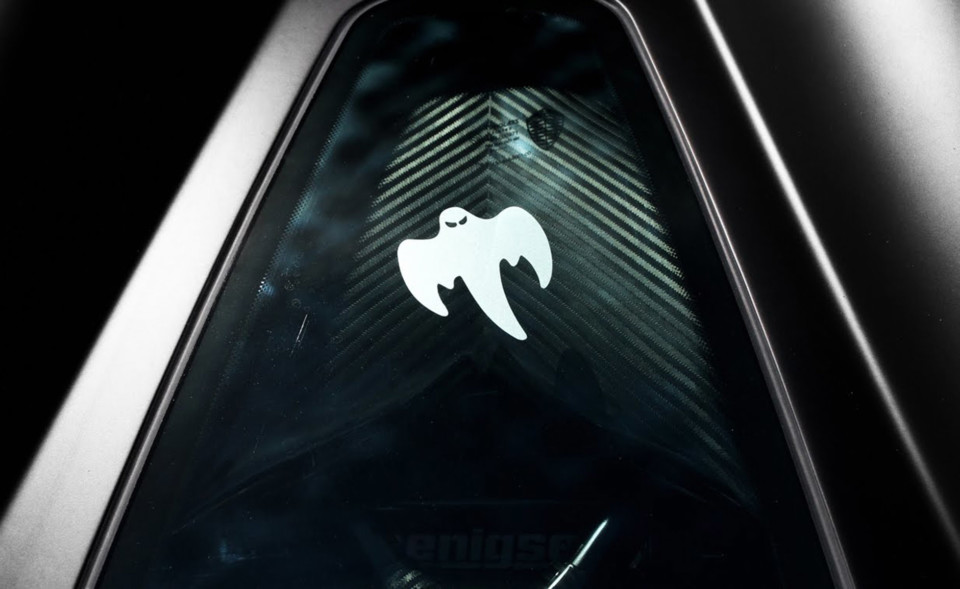
The ghost symbol seen on every Koenigsegg car was inspired by the logo of a Swedish Air Force fighter squadron.
The show then cuts back to Sweden once again and informs us how the Koenigsegg ghost symbol was inspired by the logo of the Swedish Air Force fighter squadron that was formerly based in the Koenigsegg factory. This is significant in the automotive world, as it parallels the origins of Ferrari’s iconic “Prancing Horse” logo that too was sourced from the world of military aviation.
The film’s focus moves to the latest hypercar offering from Porsche, the 918 hybrid. Pushing the outside of the envelope in hybrid electric technology, internal packaging and extreme performance, the 918 is an engineering masterpiece, one that we learn was not initially embraced by the higher-ups in the company owing to the project’s extreme expense and complexity.
We are given a tour of the section of the Porsche factory devoted to the cars’ production and learn about the massive challenges of the 918’s development and production directly from the project leader, Frank Walliser himself. Quite a treat.
Equally exciting are the breathtaking slow-motion shots of the 918 drifting around the Circuit of the Americas in Austin, Texas, home of the United States Formula 1 Grand Prix. Trust me, it’s one of the best moments in the entire documentary. We also are also on board with Porsche test driver Patrick Long as he laps the COTA circuit for the first time in a 918.
Apex then ventures to another Formula 1 circuit, Yas Marina, half way around the world in Abu Dhabi. Here, the equally outrageous McLaren P1 is introduced. With its lithe shape draped in jet-black paint, the P1 looks like the Darth Vader of automobiles as Chris Harris drifts it around Yas Marina’s challenging corners.
A visit to McLaren’s spotless and sterile Technology Center in Woking, England affords the viewer a look at various McLaren projects from the road cars to their Formula 1 effort, and gives us a rare glimpse of the company’s production floor where P1’s are being built. Aimed at possessing the highest technology of any hypercar, McLaren’s Paul Mackenzie explains how the P1 offers the ultimate in drivability and driver engagement.
Back in Ängelholm, we have a front row seat to witness the struggle to get the One:1 ready for its debut at the world’s most prestigious auto show in Geneva. Problems crop up and challenges are met by Christian Von Koenigsegg and his team as they pull all-nighters, and the prototype meets the deadline. The One:1 is revealed to much fanfare at the Geneva Auto Show.
Next up is a visit to the Mecca of the automotive world, Maranello, Italy, and the Ferrari factory. The $1,400,000, 950 bhp La Ferrari is presented, and put through its paces by Chris Harris at the Fiorano test track adjacent to the factory and along winding hillside roads on the outskirts of the town. A magnificent car, the La Ferrari sounds even better then it looks.
Just a few miles away is Modena and the Pagani factory. A fascinating interview with the company’s founder, the eccentric, charismatic autodidactic and autocratic Horatio Pagani unfolds, as he discusses his inspirations, philosophy and the latest offering from his company, the obsessively detailed wünderbeast, the Huyara. Watching the car’s active aerodynamic flaps flutter, lift and fall during a hot lap of a test circuit is something to behold.
Having been successfully debuted and every car pre-sold, the Koenigsegg One:1 is brought to the world’s most dangerous and technically complex racetrack, the Nordschleife circuit at the Nürburgring in Germany.
The ‘Ring as it is colloquially known, has become the de facto testing ground for all high performance car manufacturers, and a shot at toppling the lap record there is of primary importance to Koenigsegg.
Unfortunately, a fatal accident and subsequent restrictions set at the track ruins Koenigsegg’s chances of becoming the fastest car in the world there.
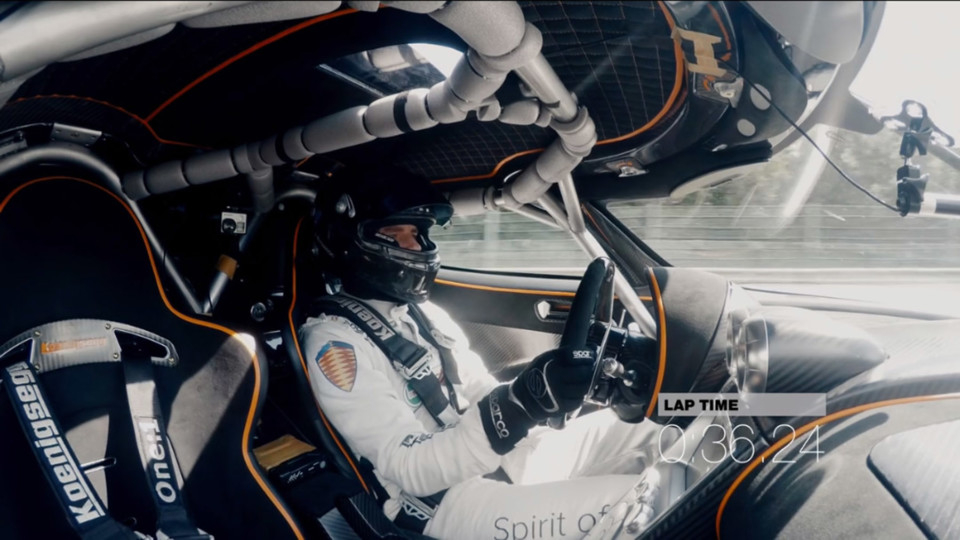
We are onboard for the One:1 ‘s record attempt at the Spa-Francorchamps Formula 1 circuit in Belgium.
Instead, the test team brings the car to Spa-Francorchamps, home of the Formula 1 Grand Prix of Belgium, to set the lap record there. We are onboard during the attempt which is suddenly aborted, due of all things, to the track marshals signaling that the One:1 has exceeded the noise restriction limit at the track.
Christian Von Koenigsegg is thwarted again at taking the production car lap record. For now…
I’m going to cut to the chase and affirm that Apex is simply a superlative documentary effort. It goes far beyond any automotive show I’ve seen, including Top Gear UK, in terms of its production value, artistry, access to what’s behind the scenes and the stature of the interviewees in the movie.
It’s not every day that a film takes you into McLaren’s production line, or introduces you to the principals of the most illustrious automobile manufacturers in the world and captures them baring their souls.
What’s more, the technical facets of the movie are no less than stunning. The cinematography is superb, with abundant use of graduated filters and wide angle optics that afford a moody, artistic tone to the visuals, and the scenes where cars are tested on some of the world’s most legendary race tracks are utterly fantastic.
The editing is on par with the visuals and keeps the film moving at a satisfying pace, while the music and sound design are on par with that of a Hollywood feature film. In every way, Apex is a well-crafted film.
But more than any of this, what sets Apex apart is the way it balances a look at the technical side of hypercars, with all the usual attendant facts, figures, numbers and measurements, and an intellectual discourse on what impact these extreme vehicles have on enthusiasts’ passions and aspirations.
This exploration of the scientific and the emotional resonates with the viewer long after the film is over, and is truly the reason why I can’t recommend the film enough.


